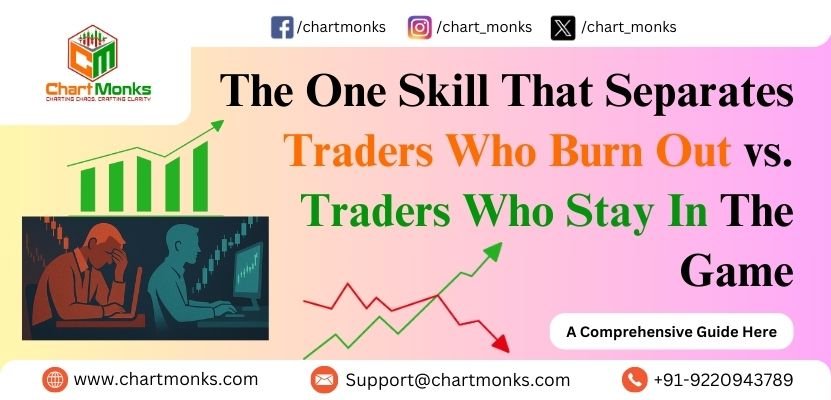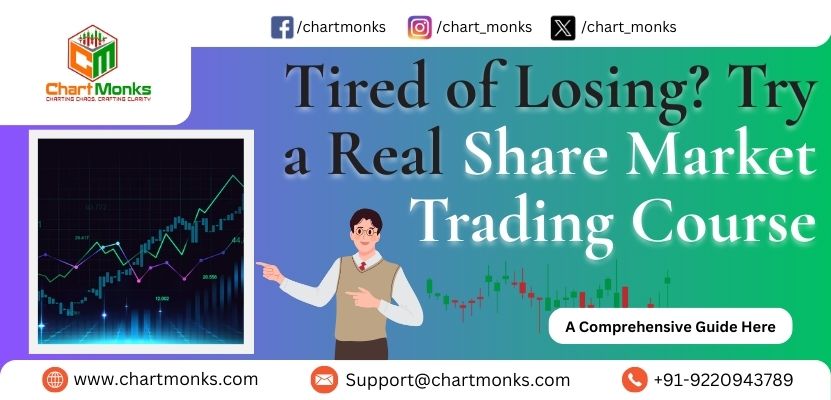Let’s not sugarcoat it.
Most people who step into trading will eventually quit. Not because they’re dumb. Not because they don’t have money. But because they never develop one core skill — the ability to sit out.
They don’t teach you that in a trading course. At least not the flashy ones. What they’ll show you is how to spot entries. How to find setups. How to use indicators. They’ll load you with tools, platforms, and chart patterns… but they rarely teach you how to do nothing when the market is screaming at you to do something.
And here’s the irony — knowing when not to trade is often what keeps you alive in this game.
Trading Isn’t About Action. It’s About Restraint.
Everyone’s hungry for that quick hit. That “perfect” trade setup. That moment when everything aligns and the candle looks just right and you feel this internal voice saying: “This is it. Get in.”
But most trades like that? They’re traps. Emotional traps. Setups that show up after you’ve had a couple of losses, or wins, and now you feel like you need to take this one to prove something to yourself.
Now zoom out.
Think of the traders who’ve been around for 10, 15, 20 years. They’re not the ones chasing green candles on a 5-minute chart. They’re not blowing up accounts trying to catch every move. These are people who’ve figured out how to survive by becoming extremely selective.
They wait.
They know their edge. And they wait for the market to give it to them — on a silver platter.
That’s the skill. And it’s rare.
Indicators Are Not the Answer (And Never Were)
This might sting a little, but it needs to be said: indicators aren’t going to save you.
They lag. They repaint. They crowd your screen and cloud your judgment. You start seeing signals where there are none. False confirmations. Misleading setups. And before you know it, you’re entering trades not because the market gave you a clean story — but because your RSI dipped below 30 and you felt like that meant something.
It doesn’t.
Indicators can be helpful, sure — as tools. But they are not the foundation. They’re not the reason experienced traders pull the trigger. Most of the time, they’re just comfort blankets for beginners who are too scared to trust the raw price action.
At Chartmonks.com, for example, we strip all that noise out. No overreliance on oscillators, no chart clutter. Just clean price behavior, structure, and real-world logic. You can’t learn to swim with floaties on forever — and trading with a pile of indicators is exactly that.
Nobody Teaches You To Sit On Your Hands
Try telling a beginner to skip a trade.
They’ll nod. They’ll say, “Yeah, I get it. Discipline.”
But give them a live chart, a funded account, and a little hype from a Telegram group, and boom — they’re in a trade they shouldn’t be in.
Why?
Because most people think learning to trade means learning to trade more.
They’ll Google things like Learn Trading Online, Best Trading Courses, or Trading Course Online and end up in a cycle of over-education. Watching endless videos, jumping between strategies, downloading PDFs they’ll never open.
And honestly? It’s not their fault.
The market for trading education is noisy. Everyone is shouting. Everyone has a formula. Everyone claims to be the shortcut.
What’s missing in all of this is someone telling you: “You don’t need more tools. You need fewer trades.”
Sitting Out Is Also A Strategy
Let’s say your strategy works 30% of the time.
Not because it’s broken — but because the market just isn’t always ready to give you that 30%.
Now imagine forcing trades every single day, hoping to squeeze juice out of dry fruit.
You’ll overtrade, get bad fills, revenge trade, and slowly lose your mental capital. And once that’s gone, your account is next.
On the flip side, imagine taking just one or two trades a week — but trades that are high-quality, high-conviction, and 100% aligned with your edge.
Which trader survives longer?
This is why smart traders aren’t obsessed with being active. They’re obsessed with staying intact. With protecting their edge. With waiting for the market to come to them — not chasing it around like a headless chicken.
Trading Courses Shouldn’t Just Teach You “How To Trade” — They Should Teach You “When Not To”
If you're looking for the best trading courses, start by asking one question:
Do they teach you to say no?
That single filter will eliminate 90% of the noise.
Because let’s face it — most online trading courses are selling you a dream. Fancy thumbnails. Words like “strategy,” “indicator,” “hack.” But the deeper truths of trading — the ones that actually matter — don’t sound sexy.
Things like:
- How to sit out a week with no setups.
- How to log trades you didn’t take and why.
- How to watch a winning trade play out… that you deliberately skipped… and still feel okay.
- How to stay unfazed by a missed move, because it wasn’t part of your plan anyway.
This is the real stuff. And the people who get it? They’re the ones who survive.
So if you’re out there searching phrases like Learn Trading Online or Online Trading Course, take a second and flip your lens. Don’t just ask what will this course teach me to do?
Ask: Will it teach me what not to do?
Patience Isn’t Passive. It’s Active Waiting.
Let’s kill the myth that patience is some kind of weak, passive thing.
It’s not.
Patience in trading is an active skill. It’s recognizing that a setup isn’t ready yet — and choosing to wait anyway. It’s watching a flashy move unfold without your money in it — and not feeling FOMO.
It’s seeing green and still staying flat.
The market is a master at baiting you into overaction. It’ll give you setups just good enough to trigger doubt. And if your default is to trade, you’ll bite. Over and over.
But if you can rewire your mind to believe that doing nothing is doing something, your trading changes.
Forever.
In The End, This Game Is About Longevity
Here’s the truth most people learn too late:
It’s not about making fast money. It’s about staying in the game long enough to make real money.
And that comes down to restraint.
The trader who takes fewer, better trades ends up with a smoother curve, more sanity, and higher capital preservation.
So yeah — go ahead and take that trading course online if it speaks to you. But don’t chase the noise. The ones worth your time are the ones that emphasize clarity, patience, selectivity.
The best trading courses are the ones that leave you with fewer trades, not more.
They won’t just teach you how to pull the trigger — they’ll teach you when not to.
And that, more than any entry signal or indicator setup, is the thing that separates traders who burn out… from the ones who stay in the game.




